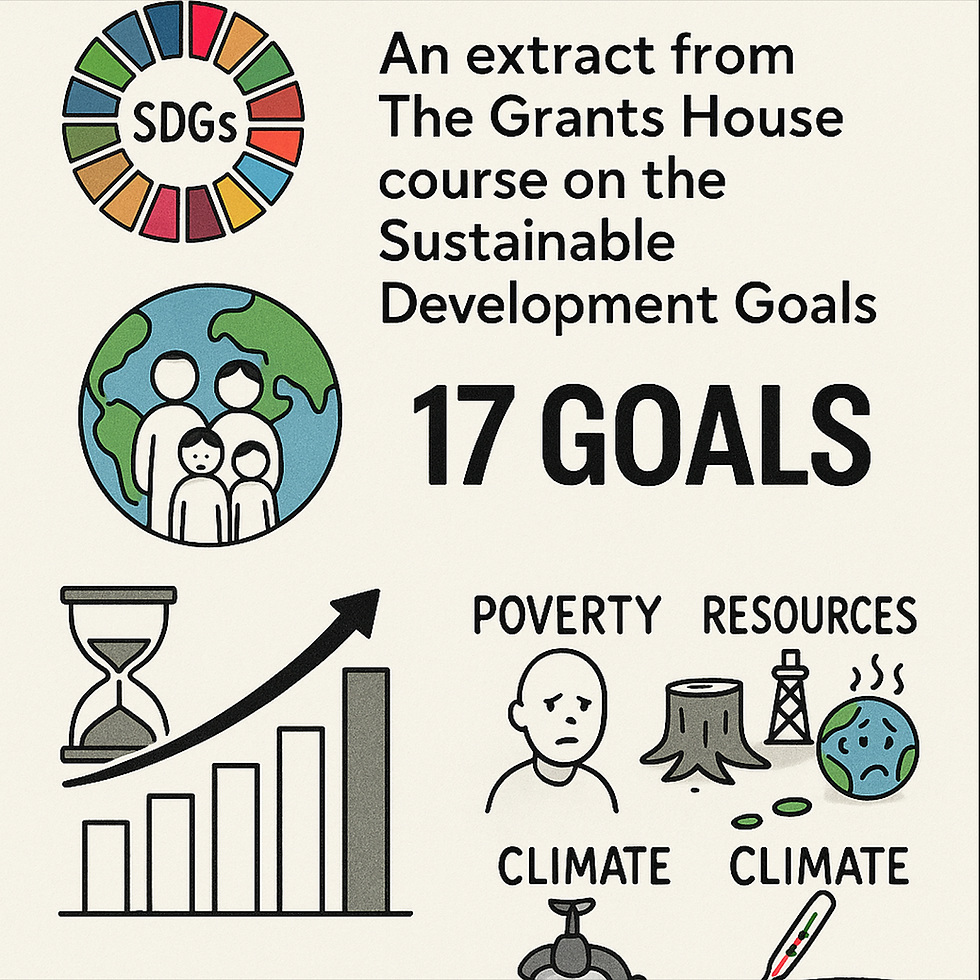The Global Partnerships: An exciting funding opportunity
- Philip

- Feb 20, 2024
- 3 min read
Global Partnership funding often involves collaboration between countries, organizations, or businesses to address common challenges. It can support various initiatives like development projects, education and health programs, or environmental efforts. These partnerships often involve multiple stakeholders working together on a global scale to address complex challenges.
In the context of the United Nations, global partnership funding refers to contributions from member states, private sectors, and philanthropic organizations to support UN initiatives. This funding helps tackle global issues like poverty, climate change, and humanitarian crises. Each member state contributes based on their capacity, fostering a collaborative approach to address shared challenges.
The Global Partnership for Education
In this blog, I want to discuss The Global Partnership for Education (GPE), an international organization that focuses on education in developing countries. It brings together governments, donors, and civil society to strengthen education systems and increase access to quality education. GPE aims to ensure that every child receives a quality education, especially in countries facing challenges in this area. It's a collaborative effort working towards sustainable education development. GPE accounts for about 7 percent of total aid for basic education, but relies on grant agents to deliver its aid. GPE's largest grant agent is the World Bank, accounting for over 75 percent of GPE spending.
The GPE is managed by a Secretariat, which is the administrative arm of the organization. The Secretariat oversees the day-to-day operations, facilitates coordination among partners, and supports the GPE Board. The Board, composed of representatives from governments, donors, civil society, teachers, and the private sector, provides strategic direction and decision-making for GPE. Together, they work to ensure effective management and implementation of education programs worldwide. The Secretariat of the Global Partnership for Education (GPE) is led by a Chief Executive Officer (CEO). Ms. Alice Albright was the first CEO of GPE until 2022 but the GPE is now led by Ms. Laura Frigenti.
In partner countries, the management of the Global Partnership for Education (GPE) involves collaboration between the government, local education authorities, and various stakeholders. GPE supports partner countries in developing and implementing their education sector plans. Key aspects include:
1. Country Ownership: GPE emphasizes the importance of partner countries taking ownership of their education plans, ensuring they align with national priorities.
2. Coordination: GPE encourages coordination among different sectors and stakeholders involved in education, fostering a holistic approach.
3. Funding Allocation: Funds are allocated based on the country's education plan, with a focus on addressing specific challenges and improving education outcomes.
4. Monitoring and Evaluation: GPE supports partner countries in establishing robust monitoring and evaluation systems to track progress and ensure effective use of funds.
5. Capacity Building: GPE invests in building the capacity of local institutions, educators, and communities to enhance the sustainability of education initiatives.
How to Access GPE Funding as a CSO?
The specific approach can vary based on the unique context of each partner country. To get involved with the Global Partnership for Education (GPE) at the country partner level as a civil society organization (CSO), consider the following steps:
1. Engage Locally: Build relationships with local education authorities, government agencies, and other stakeholders involved in education within your country.
2. Understand Country Priorities: Familiarize yourself with your country's education priorities and policies, ensuring alignment with GPE's objectives.
3. Participate in Consultations: Attend or actively participate in consultations, meetings, and forums related to education planning and policy development in your country.
4. Collaborate with Networks: Join or establish networks and coalitions that focus on education issues. This can enhance your organization's visibility and collaboration potential.
5. Advocate for Inclusivity: Advocate for the inclusion of civil society perspectives in the development and implementation of education plans. Highlight the unique contributions CSOs can bring.
6. Monitor GPE Processes: Stay informed about GPE-funded projects in your country, and monitor the processes involved. This knowledge can be valuable in aligning your organization's efforts.
7. Build Capacity: Strengthen your organization's capacity in areas relevant to GPE's focus, such as education policy analysis, advocacy, and monitoring and evaluation.
8. Apply for Funding: When GPE opens funding opportunities, submit proposals that align with your organization's goals and the education priorities of your country.
Dr. Philip A. Tanner
CEO/Founder
The Grants House
Don't forget to check out The Grants House online training to enhance your organization's skills in Grants Acquisition and Compliance @ www.TheGrantsHouse.com










Comments